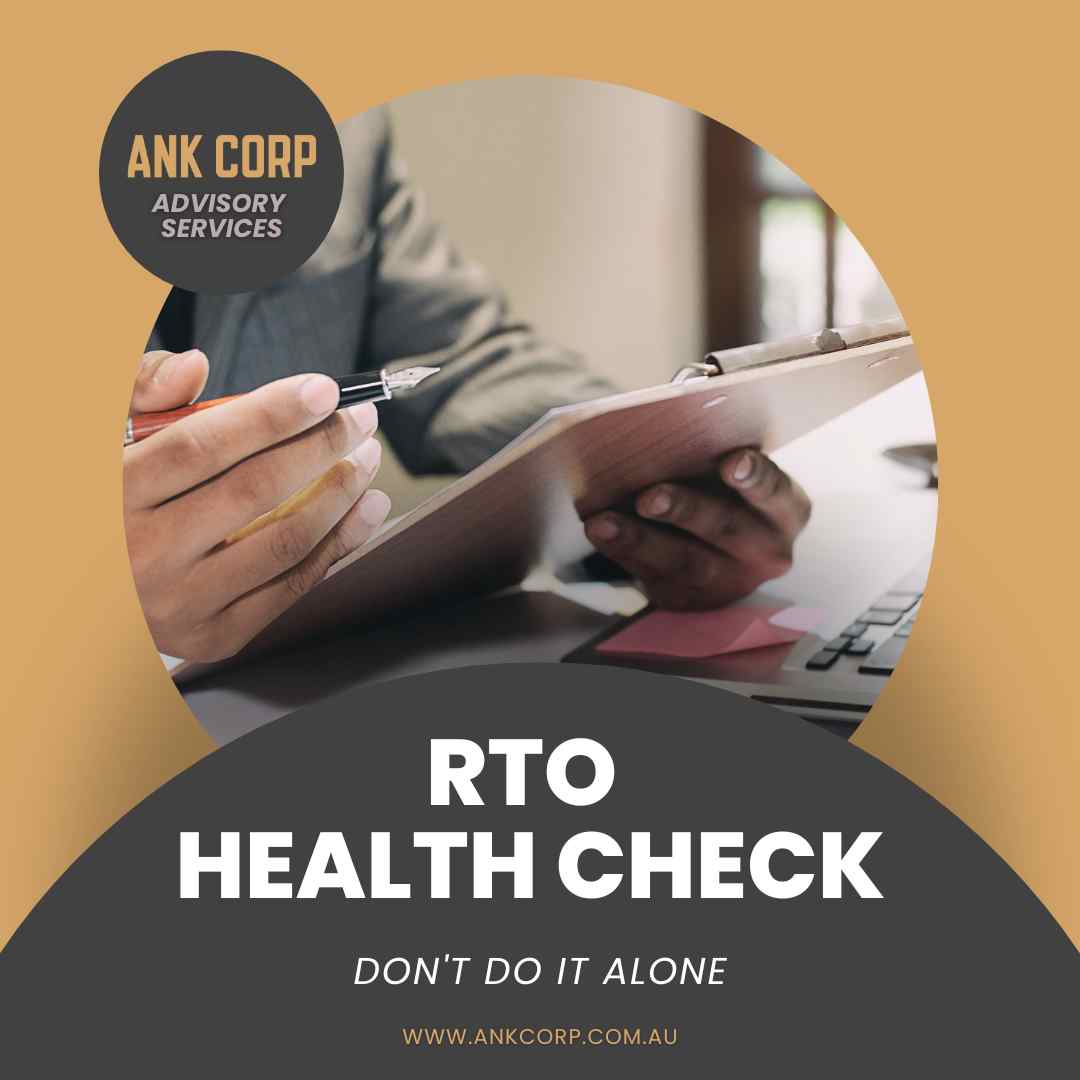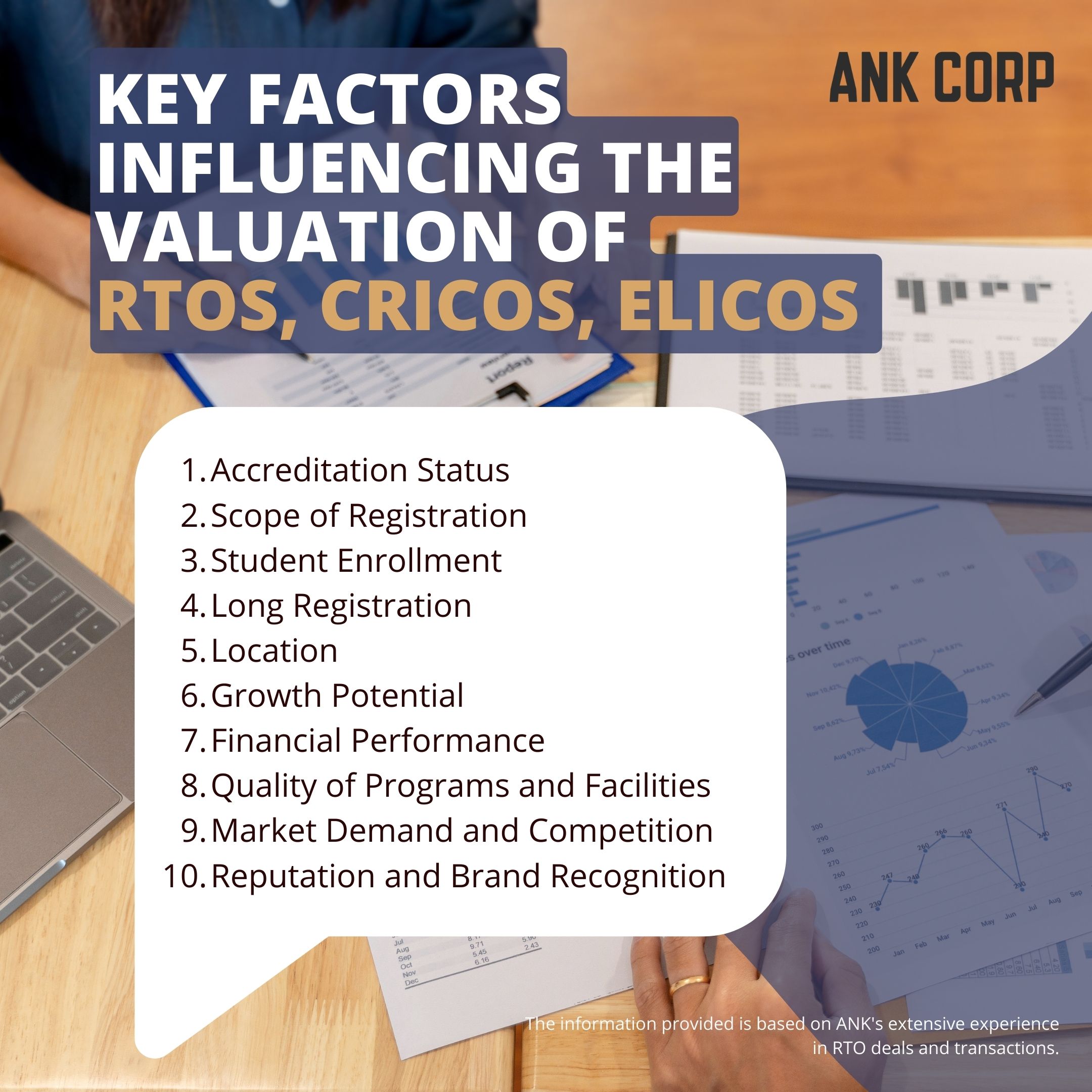In today’s dynamic educational landscape, the process of buying and selling Registered Training Organizations (RTOs) comes with its own set of challenges. From regulatory compliance to market positioning, navigating these complexities requires strategic planning and execution. Here are key strategies to overcome these hurdles and achieve successful transactions: By implementing these strategies, RTOs can navigate
The role of Registered Training Organizations (RTOs) cannot be overstated. These institutions are responsible for shaping the future workforce and delivering valuable knowledge and skills to students. ANK’s approach to appraising RTOs is deeply rooted in a comprehensive set of key elements that serve as the cornerstone for our decision-making process. We firmly believe that a profound understanding of these factors is instrumental in safeguarding the quality and effectiveness of vocational education and training institutions.
1. Financial Performance
ANK commences its assessment with a rigorous analysis of the RTO’s financial well-being. This includes a detailed examination of revenue, profitability, and cash flow. The goal is to ascertain the organization’s sustainability and fiscal strength.
2. Student Base
Enrollment numbers and student retention data are closely scrutinized. These metrics provide crucial insights into the RTO’s ability to attract and retain students, serving as a reflection of its appeal and effectiveness.
3. Compliance and Retention
Accreditation status and quality assurance processes undergo meticulous review. Compliance with industry standards and regulatory requirements is pivotal to ANK’s evaluation.
4. Reputation and Brand Recognition
The reputation of the RTO within the education sector and its brand recognition among students and the community are vital indicators ANK considers. These elements significantly influence an RTO’s standing.
5. Courses and Programs
ANK’s assessment includes a comprehensive examination of the RTO’s course offerings and programs. This analysis encompasses the alignment of these offerings with industry needs and student expectations.
6. Market Growth
The evaluation extends to the RTO’s growth within the education market and its plans for future expansion. ANK keeps a keen eye on the evolving educational landscape to ensure the RTO remains relevant and competitive.
7. Expansion and Physical Assets
The physical assets supporting the RTO’s educational efforts and its strategies for expansion are integral components of ANK’s appraisal process. The infrastructure and capacity for growth are critical considerations.
8. Competitive Landscape
ANK conducts a thorough analysis of the RTO’s position within the competitive educational landscape. Identifying strengths and areas for improvement is an essential part of our assessment.
9. Legal Obligations
Compliance with all legal requirements and obligations is meticulously reviewed to ensure strict adherence to regulatory standards and practices.
10. Employer Partnerships
The evaluation encompasses an examination of the RTO’s partnerships with employers. These relationships play a pivotal role in enhancing students’ employability and bridging the gap between education and industry.
ANK’s approach to RTO appraisal is not just a process; it’s a commitment to ensuring the delivery of quality education and training that empowers individuals and contributes to a skilled and competent workforce. By meticulously evaluating these key elements, ANK aims to uphold the standards of vocational education and training, fostering a brighter future for students and industries alike.




